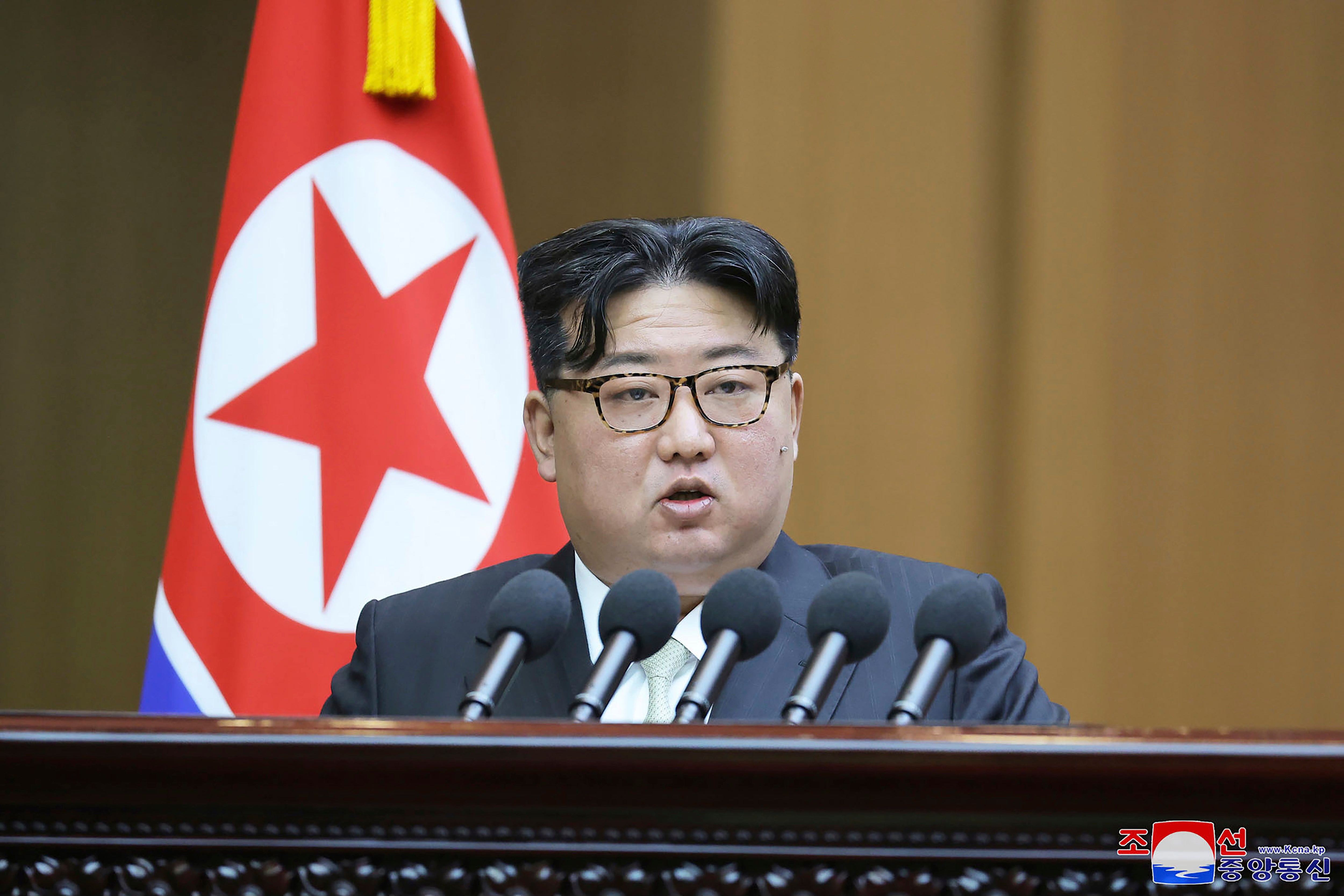North Korean leader Kim calls for war readiness while inspecting construction of warships
North Korean leader Kim Jong Un has reiterated his focus on strengthening his naval forces as he inspected the construction of new warships

North Korean leader Kim Jong Un reiterated his focus on strengthening his naval forces as he inspected the construction of new warships at an eastern shipyard, calling such projects crucial to the country’s war preparations, state media said Friday.
His visit to the shipyard in Nampho followed a series of weapons demonstrations in January that furthered increased tensions with rivals, including tests of new cruise missiles designed to be launched from submarines.
Kim in recent months has been emphasizing his goals of building a nuclear-armed navy to counter what he portrays as growing external threats posed by the United States, South Korea and Japan, which have stepped up their military cooperation to cope with Kim’s nuclear weapons and missile program.
North Korea’s official Korean Central News Agency did not specify when Kim visited Nampho. It paraphrased Kim as saying that the strengthening of his naval force “presents itself as the most important issue in reliably defending the maritime sovereignty of the country and stepping up the war preparations.”
KCNA did not specify the types of warships being built in Nampho, but said they were related to a five-year military development plan set during a ruling party congress in early 2021. Kim during those meetings revealed an extensive wish list of advanced military assets, which included nuclear-powered submarines and nuclear missiles that can be launched from underwater.
During the inspection at Nampho, Kim was briefed on the progress of his naval projects and remaining technological challenges and ordered workers to “unconditionally” complete the efforts within the timeframe of the plan that runs through 2025, KCNA said.
Kim also called for naval might on Sunday while inspecting a test of a new nuclear-capable cruise missile, the Pulhwasal-3-31, designed to be fired from submarines.
While North Korea has demonstrated quick progress in expanding its lineup of nuclear-capable missiles that are fired from land, experts say Kim’s naval ambitions may require significant more time, resources and technology breakthroughs. Its aging, diesel-powered submarines can launch only torpedoes and mines, and experts say Kim’s stated pursuit of nuclear-propelled submarines is largely unfeasible without significant external assistance.
North Korean military scientists and engineers in recent months have been checking off on Kim’s 2021 list of goals, testing for the first time last year a solid-fuel intercontinental ballistic missile, named Hwasong-18, which added to the North’s arsenal of weapons targeting the U.S. mainland.
The North on Jan. 14 also tested a new solid-fuel intermediate-range missile, which underscored its efforts to advance its weapons that could target U.S. assets in the Pacific, including the military hub of Guam.
The North also plans to launch three more military spy satellites in 2024 after sending its first one into orbit in November, as Kim has described space-based reconnaissance as crucial for monitoring U.S. and South Korean military activities and enhancing the threat of his nuclear-capable missiles.
Tensions on the Korean Peninsula are at their highest point in years, after Kim accelerated his weapons development to an unprecedented pace while issuing provocative nuclear threats against the United States, South Korea and Japan. The United States and its Asian allies in response have strengthened their combined military exercises and updated their deterrence strategies.
There are concerns that Kim, emboldened by the steady advancement of his nuclear arsenal and strengthened ties with Russia, would further ramp up pressure against his rivals in an election year in the United States and South Korea. Experts say Kim’s long-term goal is to force the United States to accept the idea of the North as a nuclear power and negotiate security concessions and sanctions relief from a position of strength.
While most analysts downplay Kim's threats of war, some say there's a possibility that he can attempt a direct military provocation he can likely contain without letting it escalate into a full-blown conflict. One of the potential crisis points is the disputed western sea boundary between the Koreas, which had been the site of several bloody naval skirmishes in past years.
___
Follow AP's Asia-Pacific coverage at https://apnews.com/hub/asia-pacific
Bookmark popover
Removed from bookmarks